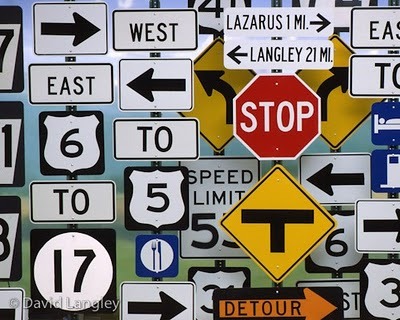The Morning Commute
A few years ago my family and I lived at a home which was located in the middle of no where. Great for silence and solitude, but horrible for the daily work commute. It was a killer on our cars as well as the gas budget! Just commuting one direction was 46 miles and took approximately one hour. One morning I dropped Eli and Grace off at their bus stop and preceded on my normal drive to work. An hour later I pulled into the parking lot at the college. All of a sudden I realized, that I actually didn’t remember the last hour. No choices, billboards, cars, bridges, tractor trailers, traffic lights or even signs. I didn’t remember any of it. My 46 mile commute contained 10 different roads, 11 turns, 3 stop signs, 5 light signals, 1 huge bridge and yet my mind was simply blank. How in the world did I drive an entire hour without ever functionally making a cognitive decision?

Recently while reading Contemporary Social Theory by Anthony Eliott I was struck by the concept of the “unthinking attitude” within structuralism. Structuralism is the idea that people live their lives within larger systems. These systems guide us in areas like politics,choices, beliefs and even religious decisions. Central to these systems is the use of signs. Signs that our minds interact with, and even some would say program us over a period of time, thus creating the “unthinking attitude”.
What’s So Unique About Signs?
Signs are everywhere… They are key tools used by larger structures in society. Often these structures shape our thinking and even help determine some of our key decisions. Signs along our roads guide us to our destination. Signs along a highway exit, prompt us to be hungry and before we know it we have a grande carmel machiata in our hands from Starbucks. Signs are everywhere and they’re powerful.
Signs exist independently of ourselves… I have traveled the same road to and from work each day for the past eight years. Along the way, there is one specific sign which I have passed every day. This sign stands independently. It doesn’t move. 24 hours a day it interacts with motorists driving by and yet the sign is not owned by any of us. It operates independently! And by the way, it has an attitude.
Signs have the ability to program our responses… Signs communicate. They force us to make decisions which may be helpful. Once the decision has been made, an imprint has been programmed in our minds based off the sign. The next time the sign is seen you are more likely to make choices based off your previous experience. So subtly over time we begin to respond without ever making a cognitive choice.
Signs lead somewhere… Signs have a purpose. They are created to lead you to a destination. Along a highway, they guide traffic and create order. In a stadium, they tell you where your seat is located. On a subway system, they direct you to your desired stop. Signs are not passive they demand a response.
“Passive Prisoners of Signs”
I thought for a minute I was losing it! The reality was I had become a passive prisoner of signs. Though signs are not passive, we on the other hand may become what structuralists call “passive prisoners of signs”. For one hour, my subconscious and the endless signs along my commute route were engaged in conversation. Signs were pointing the way and my mind was simply passively agreeing with what had been pre-programmed for the past two years. I’m glad there wasn’t a sign suggesting I jump my car off a bridge. Once parked, I gathered myself, checked the car for dents and off to work I went.
What signs have you been a passive prisoner of in your daily routine?
Leave a Reply
You must be logged in to post a comment.